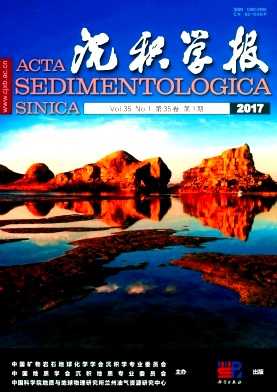Abnormal Distributions of Tricyclic Terpanes and Its Genesis in Severely Biodegraded Oils from the Miaoxi Depression, Bohai Bay Basin
doi: 10.14027/j.cnki.cjxb.2017.01.019
- Received Date: 2016-03-25
- Rev Recd Date: 2016-05-09
- Publish Date: 2017-02-10
-
Key words:
- biodegradation /
- tricyclic terpanes /
- curde oil /
- Miaoxi Depression /
- Bohai Bay Basin
Abstract: A series of biodegraded crude oils collected from Bohai Bay Basin, China, has been characterized by gas chromatography and gas chromatography-mass spectrometry. The results show that the distributions of tricyclic terpanes are abnormal in four severely biodegraded crude oil samples collected from Well PL15-8D and PL9-4. The four crude oils subjected to severe biodegradation which removed all regular steranes and most of the pentacyclic triterpanes, leaving the 25-norhopane as a dominant component in the m/z191 mass chromatograms of the saturated hydrocarbon fraction. However, the pregnanes, diasteranes and triaromatic steroid hydrocarbons appear to be relatively unaffected. The tricyclic terpanes show three abnormal distribution patterns, namely, predominant by C23, C20 and C23, C20 and C24 components, respectively, which are totally different from the source rocks and other crude oils from the Bohai Bay Basin. These abnormal distribution patterns of tricyclic terpanes are due to the preferential removal of C19~C23 over C24+ tricyclic terpanes. The ratios of the C19~C26 tricyclic terpanes to pregnane and the C19~C26 tricyclic terpanes to C27 diasteranes decrease with increasing biodegradation, but with different rates, indicating that alteration of tricyclic terpanes with different carbon numbers occurs concurrently and the C24+ tricyclic terpanes are much more resistant to microbial degradation than the C19~C23 compounds. The changes of the ratios of C19~C25 tricyclic terpanes to C26 tricyclic terpane also suggest that the C19~C23 tricyclic terpanes are more susceptible to biodegradation than C24~C26 tricyclic terpanes and C24~C25 tricyclic terpanes are more susceptible to biodegradation than C26 tricyclic terpanes. The absolute concentration of C19 to C26 tricyclic terpanes and the relative depletion of C19~C23 tricyclic terpanes show that the susceptibility of C19 to C26 tricyclic terpanes to biodegradation decreases with increasing carbon number of the components. In general, the resistance to biodegradation of tricyclic terpane series is found to increase with increasing of the carbon number, except for the C20 tricyclic terpane. No demethylated tricyclic terpanes were detected in these severely biodegraded oils, suggesting that the degradation pathway of tricyclic terpanes occurred in reservoirs might be similar to hopanes, namely, they could be degraded without forming demethylated counterparts. A putative biodegradation pathway is that the methyl on the side chain of the C cycle was oxidized to carboxyl. The prerequisite of taking tricyclic terpanes as indicators for correlating degraded oil is that they are unaffected by microbe. The regular steranes, hopanes and tricyclics which have been degraded can not be used for oil-source correlation research, while, the triaromatic steranes are non-degraded and can be used for such purpose.
| Citation: | CHENG Xiong, HOU DuJie, XU ChangGui, WANG FeiLong. Abnormal Distributions of Tricyclic Terpanes and Its Genesis in Severely Biodegraded Oils from the Miaoxi Depression, Bohai Bay Basin[J]. Acta Sedimentologica Sinica, 2017, 35(1): 193-202. doi: 10.14027/j.cnki.cjxb.2017.01.019 |






 DownLoad:
DownLoad: